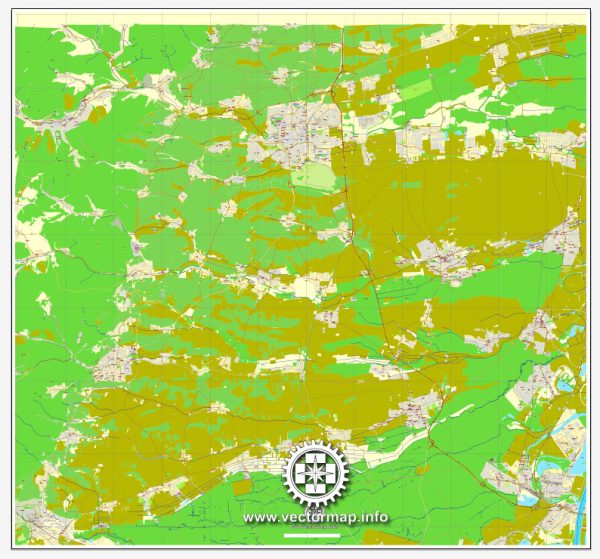Landau in der Pfalz, often simply referred to as Landau, is a town in the Rhineland-Palatinate region of Germany. Its history of urban development spans centuries, and the town has witnessed various phases of growth, decline, and transformation.
- Medieval Origins: Landau’s history can be traced back to medieval times when it was initially a small settlement. The town’s strategic location made it an important center for trade and commerce. The construction of the first fortifications around the town dates back to the 13th century.
- Fortifications and Military Importance: Landau’s development was significantly influenced by its role as a military stronghold. Over the centuries, the town saw the construction and expansion of fortifications, including walls, gates, and defensive structures. The famous “Fortress Landau” played a crucial role in the town’s history, especially during times of war.
- Economic Growth and Renaissance: Like many European towns, Landau experienced economic growth during the Renaissance period. The development of trade routes and the establishment of markets contributed to the prosperity of the town. The Renaissance also left its mark on architecture, with the construction of buildings reflecting the artistic and cultural trends of the time.
- Baroque Splendor: Landau reached its peak during the Baroque era. The town underwent significant urban development with the construction of Baroque-style buildings, squares, and churches. The famous Italian architect Francesco Antonio Petrini contributed to the design of some Baroque elements in Landau.
- French Influence: Landau’s history is intertwined with the French influence, particularly during the 17th and 18th centuries. The town was repeatedly occupied by French forces, impacting its urban development and architectural style.
- 19th Century Industrialization: The 19th century brought industrialization to Landau, transforming its economic landscape. The expansion of transportation infrastructure, including the arrival of the railway, further connected Landau to other regions, fostering economic development.
- 20th Century and World Wars: Landau, like many European towns, faced challenges during the two World Wars of the 20th century. The town was heavily damaged during World War II, leading to the post-war reconstruction and modernization.
- Contemporary Development: In the post-war period, Landau underwent urban planning and development projects. The town adapted to the changing economic and social landscape, incorporating modern architecture while preserving its historical heritage.
Today, Landau in der Pfalz stands as a blend of historical charm and modern amenities, showcasing a rich tapestry of its past through its architecture, streets, and cultural heritage. The preservation of its historic sites alongside contemporary development reflects the town’s commitment to honoring its diverse and multifaceted history.


 Author: Kirill Shrayber, Ph.D.
Author: Kirill Shrayber, Ph.D.